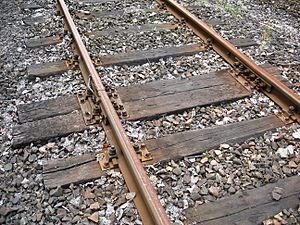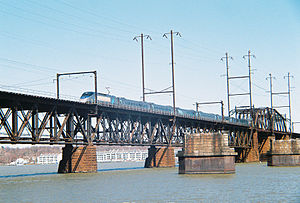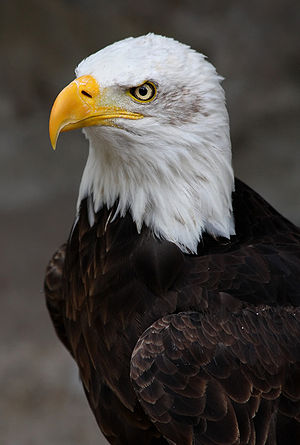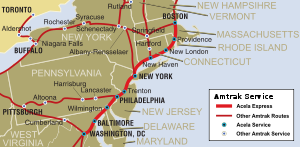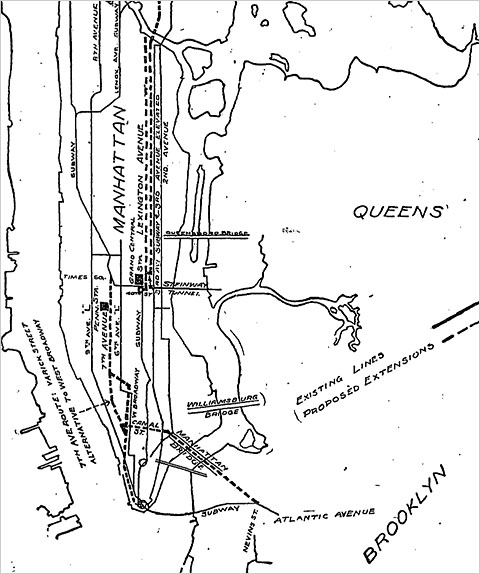
Courtesy New York Times 7/1/1909
The New York Times Traveler tweeted its headline for 100 years ago today. We follow the Times Traveler…we just love that wacky President Taft. We were amused when today’s headline flashed up that the I.R.T. offered to extend trains 68 miles.
For those of you unfamiliar with it, the Interborough Rapid Transit company operated the original New York City subway, which ran from City Hall, up the East Side to Grand Central Station(Currently the 4-5-6 trains), across 42nd Street to Times Square(the current shuttle), then up 7th Avenue to 145th Street(currently 1-2-3 trains). It wasn’t until 1915 that the west side portion was extended downward, the east side upward, and the system turned into an H. All the currently numbered lines are part of the former I.R.T., now known as Division A.
The I.R.T. also bought up and operated the various Manhattan Elevated train lines as part of their attempt to monopolize city transit. One hundred years ago, the I.R.T. submitted its proposal for transit development based on extensions of its lines.
It proposes:
- Third tracking the Second and Third Avenue Els
- An extension of the Second Avenue Line to allow it to bring its trains onto the Brooklyn Bridge without the crossover of its trains onto the Third Avenue Tracks at Chatham Square.
- Third-tracking the Ninth Avenue El south of Fourteenth Street so that express trains from Harlem can have their own track all the way downtown.
- The Steinway tunnel, which is now the tunnel used by the Number 7 Flushing-Corona line between Manhattan and Queens, is set to be sold to the city. It would be used for a new connection to Queens.
- The Queensboro Bridge, opened that year, 1909, is set to receive a spur track off the Second Avenue El. The track would meet up with the Corona line at Queensboro Plaza. The connections can still be seen on trains coming in and out of the station.
- A Four Track Subway from Times Square using the “Seventh Avenue Route” to Canal Street, and an extension under West Broadway to Battery Park.
- A Two Track Subway through Canal Street, over the Manhattan Bridge, to a connection with the current subway at Nevins Street, one station from Atlantic Avenue, Brooklyn.
- A Four Track Subway from an intersection with the existing system at Thirty-Sixth and Park Avenue to Forty-Sixth Street and then a two-track express subway under Third Avenue to join with the existing Lenox Avenue Branch at 149th St, and a two-track local subway under Lexington Avenue to the Harlem River.
- An extension of the current West Side Elevated from its Terminus at 155th Street across the Macomb’s Dam Bridge and up Jerome Avenue to 194th Street.
“Upon completion of this work a passenger will be enabled to travel from Flatbush Avenue in Brooklyn to Van Cortlandt Park on the West Side, or to Bronx Park by a through east side route for a single fare. He can either go uptown or downtown on either side of Manhattan and cross to the other side at East 149th Street or at Canal Street. He can enter Manhattan through the Steinway Tube and travel uptown and downtown on either side. He can reach the great terminals of the Pennsylvania and New York Central from a convenient point of departure in Brooklyn, in Queens Borough, in the Bronx, east and west, and on either side of Manhattan Island uptown and downtown,” said Theodore Shonts, the I.R.T. President.
Now, historically, this turned out very well for New York Transit. In a letter dated August 27, 1909, the Public Service Commission rejected the above proposal, but indicated their willingness to discuss the matter. The proposal was the basis for what was known as the Dual Contracts, known as such because not only did the I.R.T. gain some lines, but the B.R.T, the Brooklyn Rapid Transit company did as well. What were the results?
- The Steinway Tunnels, which was built as a trolley car tunnel to Manhattan from Queens, was the first underwater passenger tunnel in NYC when it had its grand opening in 1907. The tunnels were sealed without use from 1909 until 1915. The City finally bought them in 1913, the line was repurposed for rapid transit and extended to Queensboro Plaza, opening to the public in 1915. The current end of the train, Times Square, opened in 1927. Current work continues to extend the line along 42nd street, then down to the Javits Center at 34th and 11th Avenue.
- The Second Avenue, the Third Avenue and the Ninth Avenue lines, as well as the Sixth Avenue line, which was a separate line south of 53rd Street but used the tracks of the Ninth Avenue line from 53rd Street north to 155th Street and Eighth Avenue, the terminus of both the Sixth and Ninth Avenue lines, were all knocked down. The proposed extension from 155th into the Bronx was built, and remained after the rest of the line was gone as the Polo Grounds Shuttle, running from 155th Street over to meet up with the Jerome Avenue line(the Current #4 train) near Yankee Stadium. It is also, except for a small stretch of tunnel, now gone.
- The original I.R.T. Subway was extended downward to Battery Park on the West Side and up to the Bronx on the East Side, creating the complete system the I.R.T. had envisioned.
- The extension over the Manhattan Bridge was built and operated by the B.R.T., later its successor, the B.M.T., Brooklyn Manhattan Transit.
The ambitious proposal of 1909 and its result, the Dual Contracts, connected the city’s mass transit. For the first time, the rest of the city was connected to Manhattan by efficient public transit, and Manhattan itself became a lot more convenient to get around. And as New York City is our hometown, we have to appreciate that.
For more information on New York City transit history, check out NYCSubway.org.
Related articles by Zemanta
- Subways Loudest Transit Option in NYC (scientificamerican.com)
![Reblog this post [with Zemanta]](http://img.zemanta.com/reblog_e.png?x-id=61e2df5c-2367-4b2e-8a84-1070a417c0a1)
